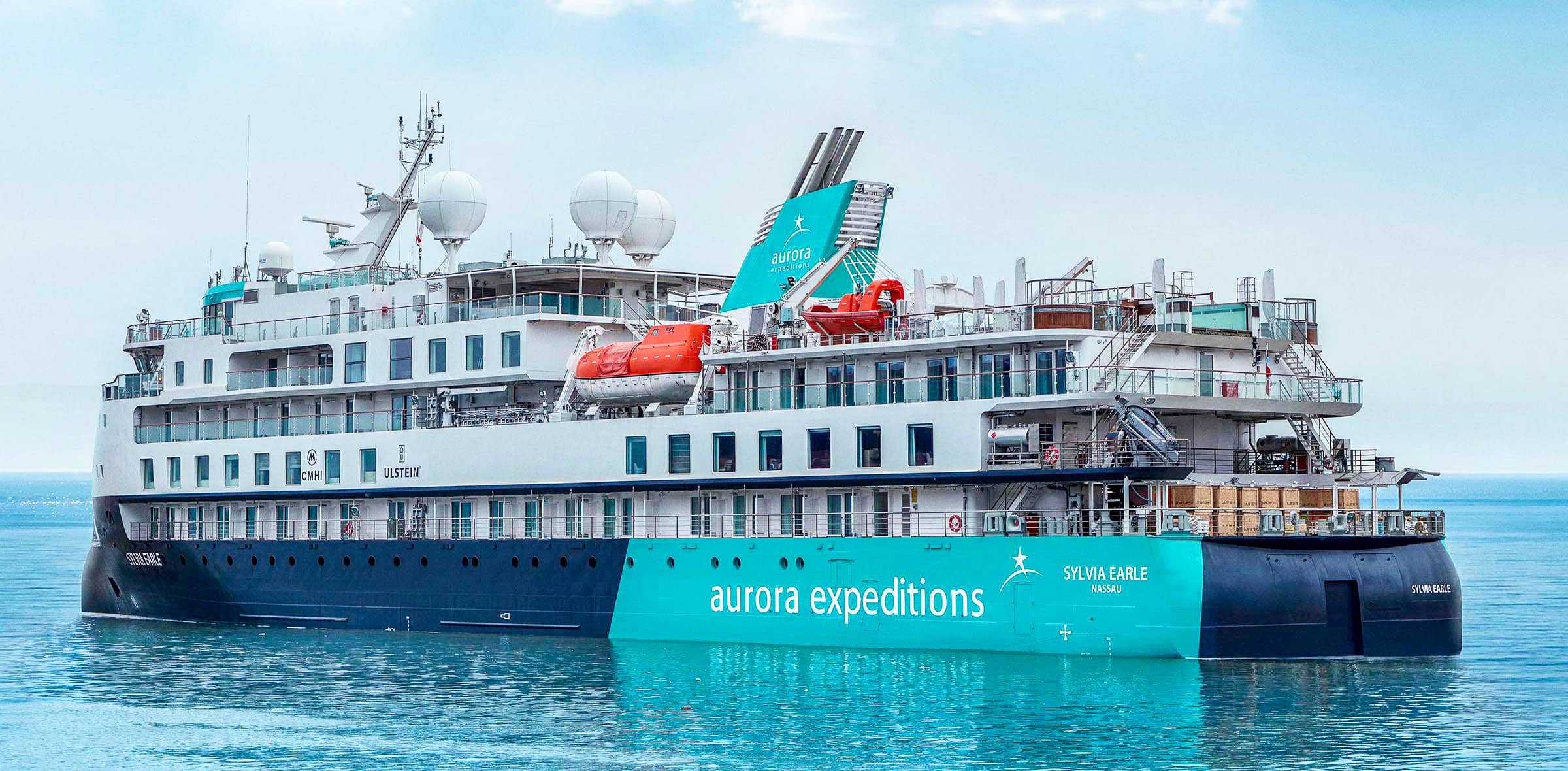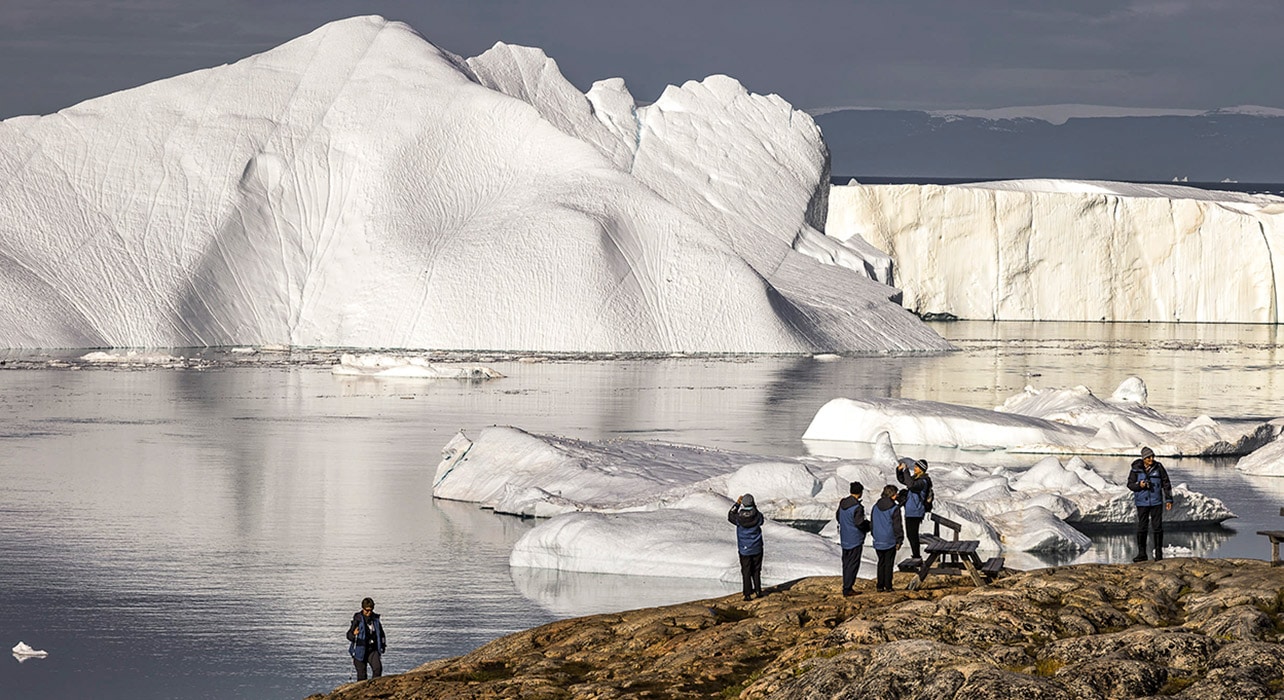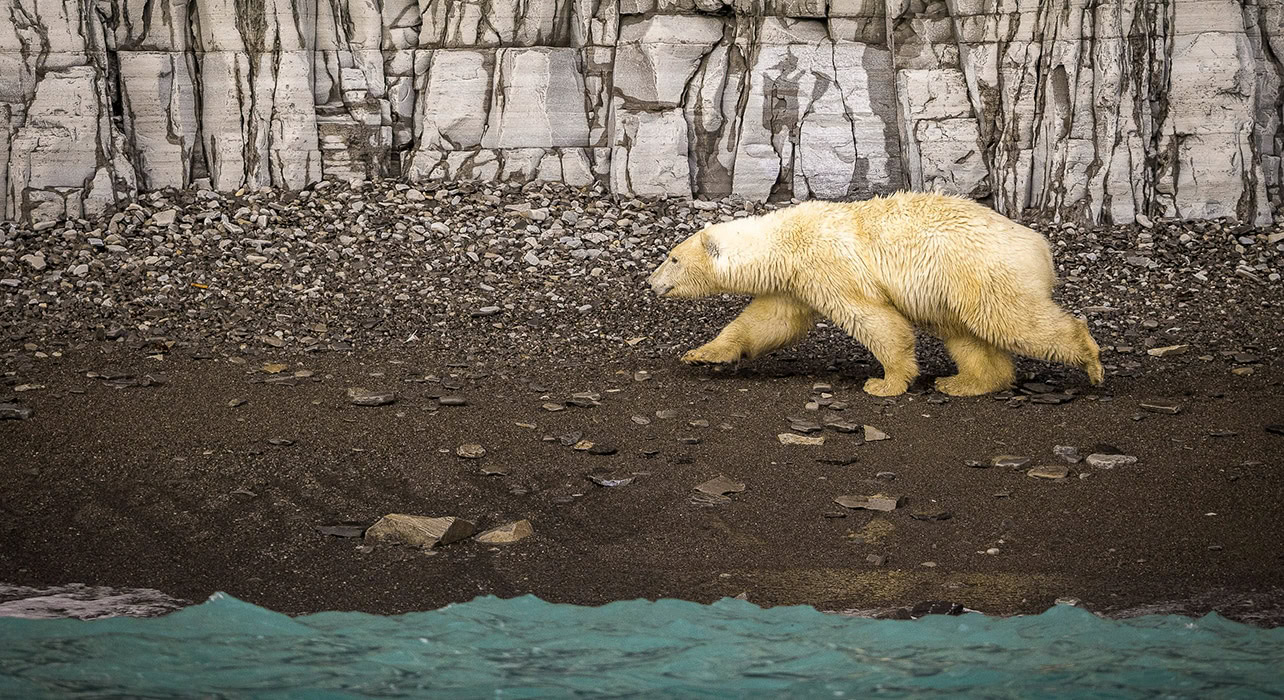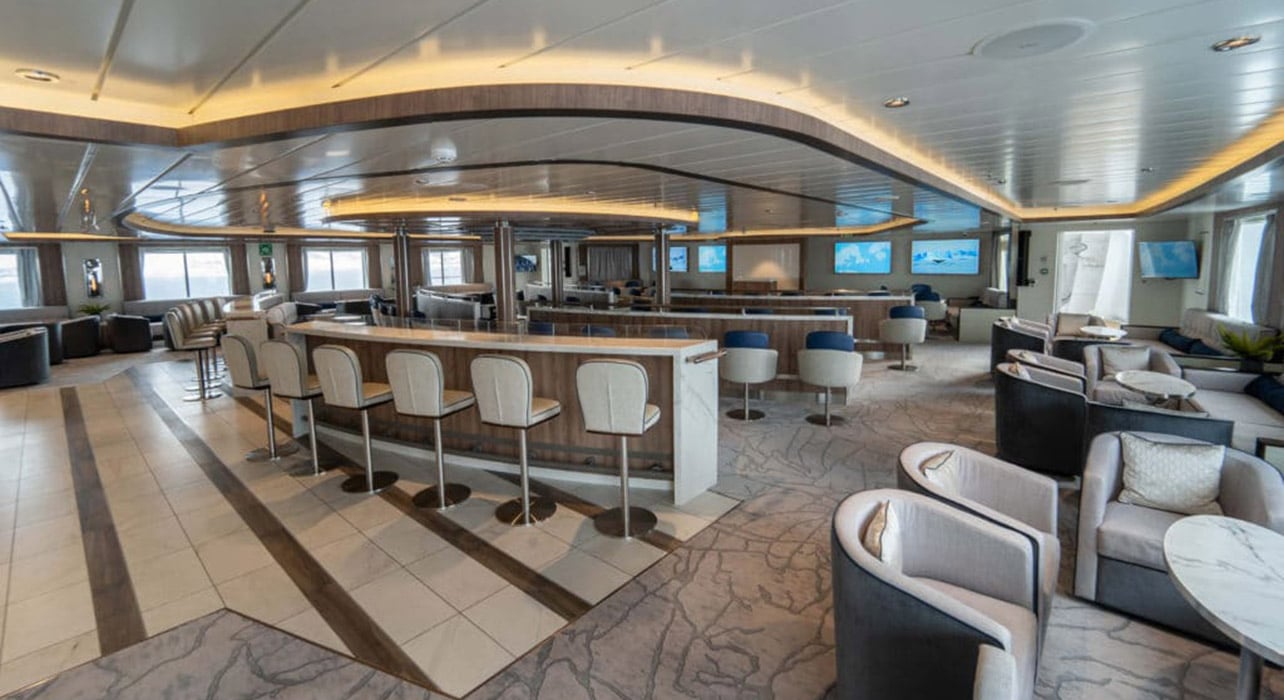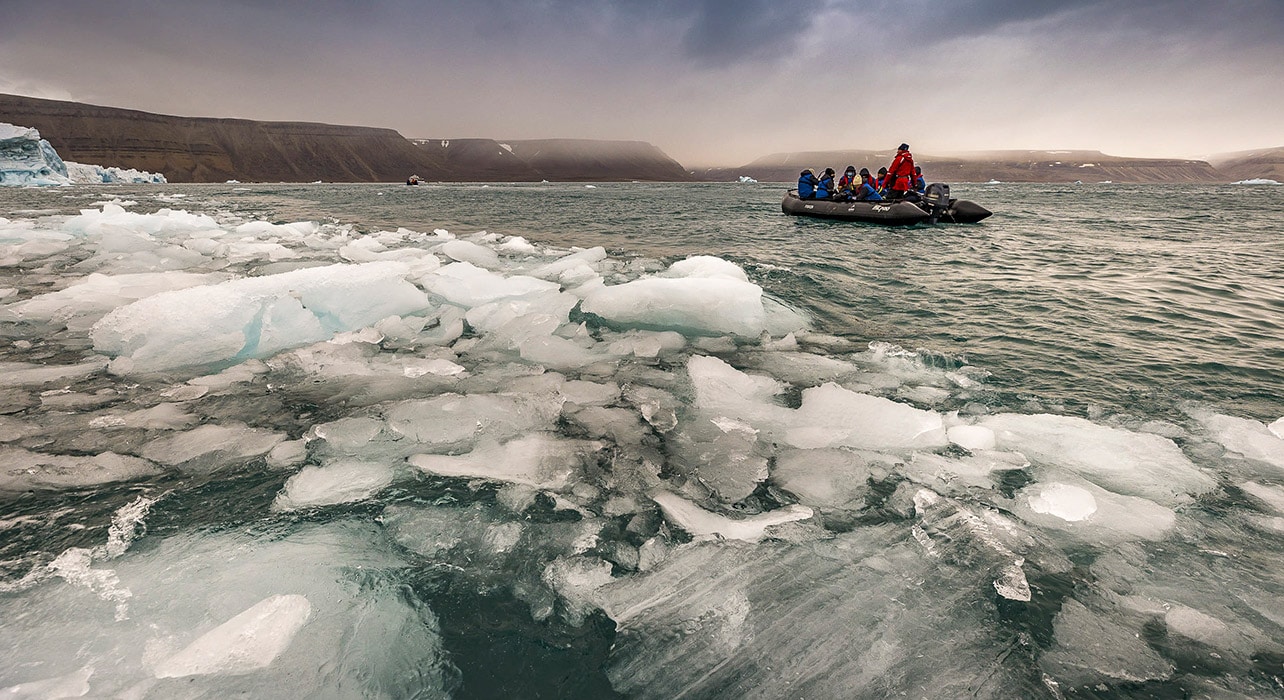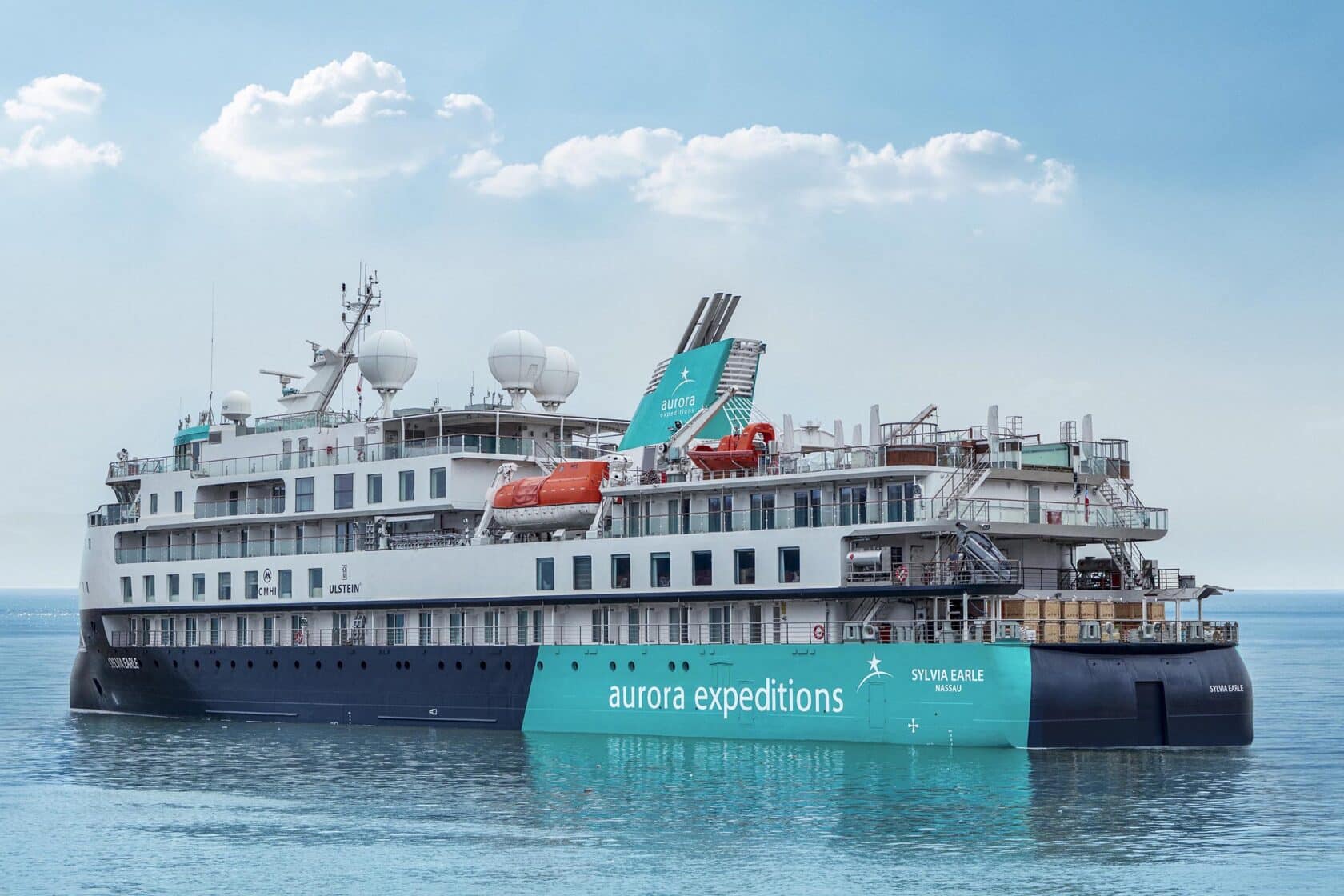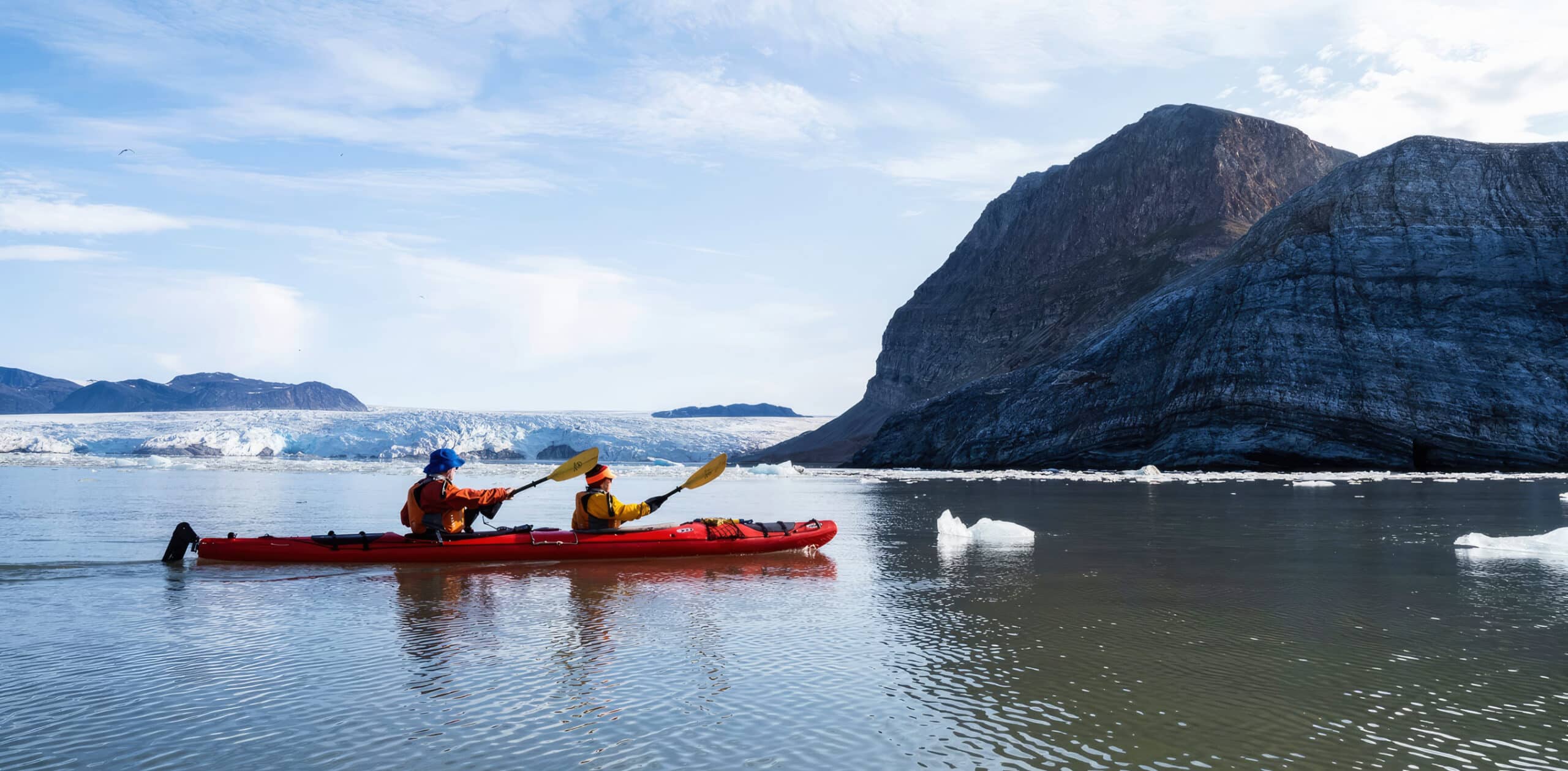
Voyage Between Western Greenland and Canada's High Arctic Region
Northwest Passage Expedition
- 10-15% off all cabins and $1,500 air credit on 2024 departures
- 20% off all cabins on 2025 departures
Overview
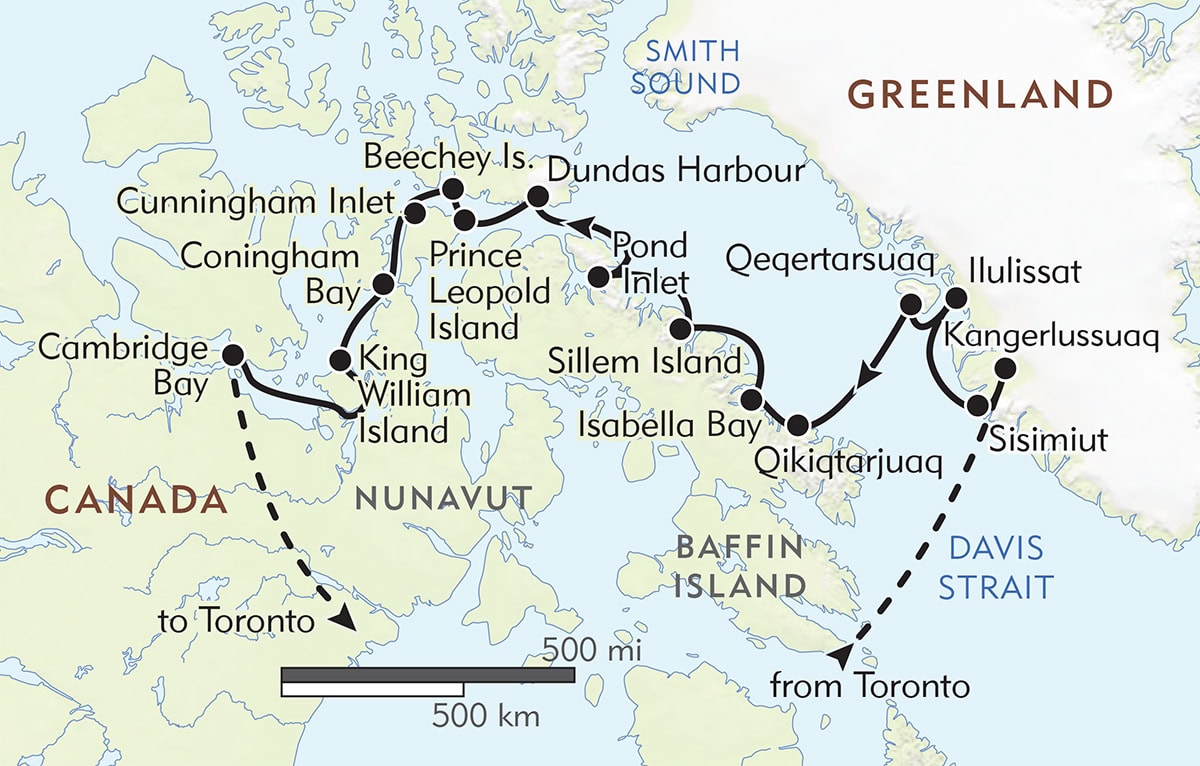

Arrive: Toronto, Canada (or reverse)
Depart: Calgary, Canada (or reverse)
Highlights
- Marvel at Ilulissat Icefjord, a UNESCO World Heritage Site
- Hike on Devon Island, the world's largest uninhabited island, with its stunning geology, fjords, and glacial valleys to explore
- On Beechey Island, visit memorials and graves of explorers from John Franklin's expedition
- Keep watch with the hope of spotting iconic Arctic wildlife including musk ox, polar bears, beluga whales, walrus, and perhaps narwhal
Itinerary
Note: This trip is not exclusive to, nor operated by, Wilderness Travel, who acts solely as an agent in booking your reservation with the operator. Please download the Rate Sheet in the Dates & Pricing section to see the full pricing details and contact our Cruise Collection Specialists to check availability.
Days 3-6: Expedition Cruising
Day 7: Lancaster Sound, Beechey Island
Day 8: Devon Island, Lancaster Sound
Day 9: Pond Inlet (Mittimatalik), Bylot Island
Day 10: Sillem Island
Day 11: Isabella Bay
Day 12: Qikiqtarjuaq (Baffin Island) / At Sea
Day 13: Qeqertarsuaq (Disko Island)
Day 14: Ilulissat
Day 15: Sisimiut
Days 16-17: Disembark in Kangerlussuaq / Fly to Toronto / Depart
Accommodations
Scroll through our signature accommodations for this trip below. Although it is highly unlikely, we may make substitutions when necessary.
What the Trip is Like
Book your trip today
Our Area Specialists know every detail about our tours. They will be happy to answer any questions and help you choose the journey that’s right for you. Contact us to learn more or book your trip today!
Itinerary
Submit the form below to download itinerary
Trip Levels
With more than 200 different adventures to choose from, we want to help you find the trip that’s right for you. Our Trip Level system ranks each trip in two ways: a number rating from 1 to 6 according to the activity, and general travel rigors. 1 is the easiest and 6+ the most difficult—see descriptions below for explanations of each number. A plus (+) sign means the trip is a bit more strenuous than other trips of that level. The detailed explanation of each trip—below the bar with the number rating—is perhaps more important, specifying activities, altitudes, hiking, and travel conditions. The Detailed Itinerary, available by download or mail, gives further information. Our Area Managers can also answer questions and guide you to the trip that best suits your interests.
Level 1 – Easiest
Non-camping journeys, optional walks, little elevation gain or loss.
Level 2 – Easy to Moderate
Hotel nights and/or safari-style camping, hikes of two to four hours on some days. Other physical activities are sometimes included, such as optional sea kayaking.
Level 3 – Moderate
Half- to full-day hikes (3-6 hours) over rolling countryside on most days, occasional steep trails. Many of our hotel-based walking tours are in this category, as are our snorkeling adventures.
- Tuscany & the Cinque Terre
- Argentina: Hikes and Estancias of Patagonia
- Palau Snorkeling & Sea Kayaking
- Some trips with minimal hiking but rugged travel conditions or long drives, such as Tribal Ghana, Togo & Benin, are Trip Level 3.
Level 4 – Moderate to Strenuous
Full-day hikes (4-6 hours), mountainous terrain, significant elevation gains and losses (hiking up or down as much as 3,000 feet) on many days. Altitudes no greater than about 10,000 feet.
Level 5 – Strenuous
Full-day hikes (4-8 hours), mountainous, steep terrain (hiking up or down as much as 3,500 feet) on many days. Trips with hiking at average altitudes of 10,000 to 12,000 feet are in this category.
Level 6 – Very Strenuous
Full-day hikes (5-8 hours), mountainous, steep terrain (hiking up or down as much as 3,500 feet) on many days. Most hikes take place at altitudes above 10,000 feet, with some days ascending as high as 18,000 feet.


